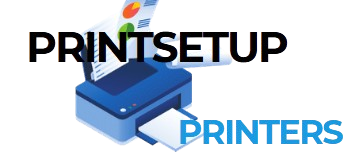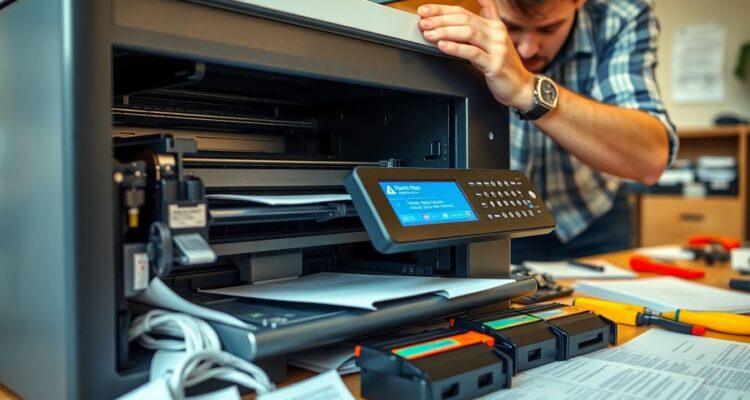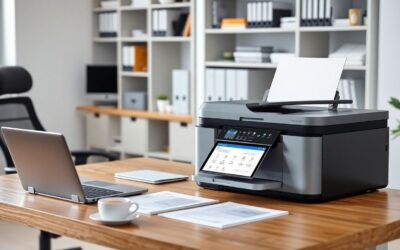The Ultimate Guide to Restoring Your Printer’s Performance
Introduction
Few frustrations match the annoyance of a printer refusing to work right when you need it most. Whether you’re printing important documents or school assignments, printer problems can seriously slow you down. Luckily, most common issues are easy to fix if you know some basic troubleshooting steps. Knowing how to get your printer back on track can save time and money, especially since printer problems happen almost everywhere — from busy offices to home setups. Recent surveys show that over 60% of users face printer issues at least once a month, making quick fixes even more essential.
Understanding Common Printer Problems
Overview of Typical Printer Issues
Printer problems come in many forms. The most common ones include paper jams, poor print quality, and connectivity issues. Paper jams can seem like a small hassle but often cause the entire printing process to halt. Connectivity problems may stem from Wi-Fi drops or faulty cables, leaving you stuck without a working printer. Print quality issues—such as streaks, faded notices, or smudges—can make your documents look unprofessional. Unresolved issues lead to delays, missed deadlines, and frustration, so catching them early is key.
Common Causes of Printer Malfunctions
Many printer problems boil down to a few main culprits. Hardware failures like worn-out rollers or broken gears can stop your printer in its tracks. Outdated drivers or firmware can also cause compatibility issues, especially with new computers or updates. Sometimes, user errors happen—such as selecting the wrong settings or running low on ink or toner. Environmental factors, like dust settling inside the machine or high humidity, can interfere with moving parts or print quality. Recognizing these causes helps you tackle issues faster.
Basic Troubleshooting Steps
Checking Hardware and Connectivity
First, confirm your printer is powered on and connected. For wired models, ensure the USB cable is plugged in securely. For wireless printers, verify Wi-Fi is active and your device has a strong connection. Also, check ink or toner levels; no cartridge? Printing won’t work. Look over the printer for any visible damage or misaligned parts—sometimes, simple fixes like realigning paper trays help. Remember, a quick hardware scan can save hours of frustration.
Clearing Paper Jams
Paper jams are a common headache but often straightforward to resolve. Turn off the printer before clearing the jam to avoid damage. Gently remove any stuck paper, making sure not to tear it. Check the rollers and paths for tiny bits of paper that might block movement. After clearing, ensure paper is loaded correctly and not overfilled. Used consistently, these steps prevent future jams and keep your workflow smooth.
Restarting and Resetting the Printer
Sometimes, a fresh start works wonders. Turn off your printer, unplug it, and wait for about 30 seconds. Power it back on—this resets internal components. If connection issues persist, reset the network settings or restore factory defaults following your printer’s manual. These simple resets often fix stubborn glitches that software updates don’t resolve.
Updating Drivers and Firmware
Keeping your printer’s software fresh is critical. Outdated drivers can cause printing errors or disconnects. Visit the manufacturer’s website and download the latest driver compatible with your operating system. Follow instructions carefully—they often involve running an installer or connecting your device during the process. Regular updates fix bugs and improve performance, ensuring smooth printing every time.
Running Printer Troubleshooter Tools
Most computers have built-in troubleshooting utilities. On Windows, access the “Troubleshoot” menu in Settings and select “Printer.” Mac users can use “Printer Setup Utility.” These tools scan for common issues and fix them automatically. If troubleshooting doesn’t work, consider third-party diagnostic tools designed for printers—these can identify less obvious problems.
Advanced Troubleshooting Techniques
Resolving Compatibility and Driver Issues
When your printer suddenly stops working after a system update, compatibility might be to blame. Reinstall your driver or roll back to a previous version if needed. Sometimes, deleting the current driver and installing a fresh copy fixes persistent conflicts. This process restores the link between your device and your computer so printing can continue smoothly.
Network Troubleshooting
Wi-Fi problems are common barriers to printing. Restart your router if the printer isn’t showing up on your device. Check if your printer is connected to the right network. You may need to reconfigure network settings or reset the printer’s network connection. Testing other devices on the same Wi-Fi can help identify whether the issue lies with the printer or the network.
Fixing Print Quality Problems
Prints full of streaks or faded text usually point to clogged print heads or low ink. Use the printer’s cleaning utility—often found in the settings menu—to clear blockages. If cleaning doesn’t help, replace the cartridges with new ones. Proper maintenance keeps your prints crisp and sharp without fading or smudging.
Resolving Error Messages and Codes
Error codes serve as clues to what’s wrong. For example, a “Paper Jam” message indicates a blockage, while “Cartridge Problem” signals a need for replacement. Consult your printer manual or online support pages for specific solutions tied to each code. Tackling these codes step-by-step clears the alert and gets your printer back in action.
Resolving Paper Feed and Mechanical Malfunctions
Sensor problems or gears slipping out of place can cause paper feed failures. Check for obstructions or debris inside the paper path. Sometimes, dust or small objects block sensors, leading to errors. If mechanical parts are broken or heavily worn, professional repair or replacement might be necessary.
Prevention and Maintenance Tips
Regular Printer Maintenance
Consistent cleaning prevents many issues. Use a soft cloth or compressed air to clean rollers and print heads. Regularly update your firmware to benefit from bug fixes and improvements. Scheduled maintenance reduces downtime and extends your device’s lifespan.
Proper Use and Handling
Load paper correctly—never overfill or tilt stacks—as this helps prevent jams. Store ink or toner cartridges properly to avoid clogging. Practice gentle handling of printing materials to keep everything running smoothly longer.
Scheduling Routine Checks
Set reminders to clean your printer and update its software monthly. Use diagnostic tools provided by manufacturers to monitor performance. Routine checks catch problems early, saving troubleshooting time.
Expert Insights and Industry Recommendations
Leading printer brands like HP and Canon emphasize regular maintenance and updates. IT specialists advise keeping firmware current and avoiding makeshift repairs. Recent innovations include self-cleaning heads and smarter sensors that reduce jam rates. Industry guidelines consistently recommend user-friendly troubleshooting to extend printer life and minimize frustration.
Conclusion
Troubleshooting printer issues doesn’t have to be overwhelming. Starting with basic checks—like ensuring connections, clearing jams, and updating drivers—often solves most problems quickly. Remember, regular maintenance is your best defense against future headaches. When issues persist beyond simple fixes, seeking professional repairs might be the best move. Keep your printer well-maintained, and it will serve you reliably for years to come. When you care for your printer, it’ll care for your productivity.



